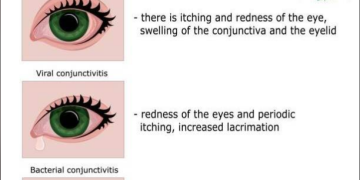Introduction
Ink is an everyday staple, whether we’re jotting down notes, signing documents, or expressing our creativity through art. However, there’s a hidden danger lurking within our trusted pens: ink poisoning. Ink poisoning from pen is a topic that demands attention and awareness.
The purpose of this article is to shed light on the potential risks associated with ink poisoning from pens. Many people assume that ink is harmless, but the truth is that ink contains various chemical components, including pigments and dyes, which can pose health hazards if not handled properly.
Through scientific evidence and real-life incidents, we aim to dispel misconceptions surrounding ink poisoning and raise awareness about its symptoms, effects, and long-term implications. Furthermore, we will explore preventive measures, treatment options, and the importance of ink safety regulations.
By understanding the risks and adopting safety precautions, we can minimize the chances of ink poisoning and protect ourselves, especially children who may unknowingly come into contact with ink. Let us embark on this journey to uncover the hidden dangers of ink and empower ourselves with the knowledge to ensure our well-being.
Understanding Ink Composition
In order to comprehend the potential dangers of ink poisoning from pens, it is essential to delve into the composition of ink. Ink is not a simple, single substance; rather, it is a complex mixture of various chemical components. These components include pigments, dyes, solvents, resins, and additives, each serving a specific purpose in the ink formulation.
Pigments and dyes provide color to the ink, while solvents act as carriers, allowing the ink to flow smoothly. Resins help the ink adhere to the surface, and additives enhance certain properties like drying time or resistance to fading. These components work together to create the ink we use daily.
However, it is crucial to recognize that some of these components can pose health risks if they come into contact with our bodies. Certain pigments or dyes may contain heavy metals or toxic chemicals, which, when absorbed or ingested, can lead to ink poisoning.
By understanding the intricate composition of ink, we can better comprehend the potential risks associated with ink poisoning from pens. This knowledge will help us take necessary precautions and make informed decisions regarding our ink usage and safety.
Ink Poisoning: Myth or Reality?
When the topic of ink poisoning from pens arises, there are often debates regarding its validity. Some may dismiss it as a mere myth, assuming that ink is harmless and cannot cause any significant harm to our health. However, it is crucial to separate fact from fiction and explore the reality of ink poisoning.
Contrary to popular belief, ink poisoning is indeed a real concern. Scientific research and documented cases have provided substantial evidence of the potential toxicity of ink, especially when it comes into contact with our bodies. The chemical components present in ink, such as certain pigments or dyes, can have adverse effects on our health if absorbed, ingested, or inhaled.
While ink poisoning may not occur with every instance of pen usage, it is important to acknowledge that prolonged exposure, accidental ingestion, or improper handling can increase the risk. By understanding the reality of ink poisoning, we can take appropriate measures to prevent any potential harm and prioritize our well-being.
Routes of Ink Exposure
Ink poisoning can occur through various routes of exposure, highlighting the importance of understanding how ink can come into contact with our bodies. Being aware of these routes can help us take necessary precautions to minimize the risks associated with ink poisoning.
One common route of ink exposure is through skin contact and absorption. When we handle pens or come into direct contact with ink, there is a possibility of the ink being absorbed through the skin, especially if there are cuts or abrasions present. This can lead to localized skin reactions or even systemic effects if a significant amount of ink is absorbed.
Another route of exposure is through accidental ingestion. This can happen when pens are mistakenly put in the mouth, particularly by children. Ink can also be ingested inadvertently through habits like chewing on pen caps or using pens as makeshift teethers. Swallowing ink can introduce toxic substances into the body, potentially leading to ink poisoning.
Inhalation of ink particles is yet another route of exposure, although it is less common. Fine particles or droplets of ink can become airborne, especially during activities like using aerosolized ink or operating printing machines. Inhaling these particles can irritate the respiratory system and, in some cases, lead to ink poisoning.
By understanding these routes of exposure, we can be more vigilant and adopt preventive measures to reduce the risk of ink poisoning from pens.
Frequently Asked Questions (FAQs)
1. What is ink poisoning from pen?
It can occur through skin absorption, accidental ingestion, or inhalation of ink particles, leading to various symptoms and health effects.
2. What are the symptoms of ink poisoning?
Symptoms of ink poisoning can vary depending on the individual and the extent of exposure. Common symptoms include skin irritation, allergic reactions, gastrointestinal issues (such as nausea or vomiting), respiratory problems, and in severe cases, long-term health implications.
3. How can I prevent ink poisoning from pens?
To prevent ink poisoning, it is essential to handle pens and ink cartridges with care. Follow safety guidelines, such as avoiding skin contact with ink, keeping pens away from the mouth, and ensuring proper ventilation when using aerosolized inks. Additionally, store pens and ink cartridges in a secure place and dispose of them properly.
4. What should I do if I suspect ink poisoning?
If you suspect ink poisoning, it is crucial to take immediate action. Rinse the affected area with water if there is skin contact, seek medical attention if symptoms worsen or persist, and inform healthcare professionals about the potential ink exposure.
5. Are there eco-friendly alternatives to traditional ink?
Yes, there are eco-friendly alternatives available, such as inkless pens and digital alternatives. These options eliminate the need for traditional ink and reduce the environmental impact associated with ink production and disposal.
Remember, if you have specific concerns or experience any symptoms related to ink exposure, it is always best to consult a medical professional for personalized advice and guidance.
You can also read about this Ink Poisoning from pen please visit thesmartblogger.com.au




































Discussion about this post